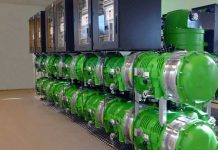Martin Hockaday, environment and energy sector manager at NQA, reviews the Plan, Do, Check, Act cycle of ISO 50001 and how it improves energy management
In the last issue we looked at the first step of the Plan, Do, Check, Act model and focused on the energy planning process defined in ISO 50001. This article gives an overview of the second step, Do, or as ISO 50001 calls it, implementation and operation of an energy management system (EnMS). It is worth remembering that ISO 50001 is applicable to any type and size of organisations, irrespective of industry, geography or culture.
Implementation and operation
This section of the standard has seven main requirements that turn the outputs of the energy planning process into action that is structured, communicated and where relevant documented. It is worth noting that documentation should be treated with pragmatism – where the standard requires documentation then it must be followed to achieve compliance, but it is unnecessary to create additional records unless they add value to your EnMS.
Competence, training and awareness
This requirement applies direct employees and subcontractors who impact on significant energy uses, which are identified in the energy plan. Flexibility of training methods is given, but should be appropriate to the role, responsibilities, education, skills and experience of each individual. Whatever method, appropriate records are required by the standard.
Communication
Communication is critical to the effectiveness of the EnMS, internal and external communication is required. It is expected that internal communication is a two-way process that considers suggestions for improvement of the EnMS. This is a key engagement activity.
Documentation
ISO 50001 does not intend bureaucracy and provides good flexibility for documenting the EnMS. This could be paper or electronic records, but also signage, diagrams, flow charts and dashboards that communicate the objectives, actions and achievements of the EnMS.
Operational control
Responding to this requirement will vary significantly from organisation to organisation. The fundamental aim is to ensure that energy policy, targets and action plans are implemented within operational and maintenance activities.
Design
Ideally energy efficiency should be designed into the EnMS to maximise its performance from the point of implementation. This requirement states that the results of design activities are recorded.
Procurement of energy services, products, equipment and energy
Procurement has a significant impact cost, resource and efficiency. It is specifically addressed and procurement processes must be established, documented, evaluated and communicated. Life cycle analysis should be considered in evaluation.
Summary
This brief overview of implantation and operation should give a flavour for the nature of the requirements of ISO 50001 and demonstrate its flexibility. The key conclusion is that ISO 50001 provides a scalable framework that can be implemented in the most appropriate way to your organisation to provide continual improvement of energy management.
In the next issue of we&e, we’ll look at the Check stage of the process. This essential step ensures that the EnMS is effective and continually improved. If you can’t wait until then you or if you want more information about implementing ISO 50001 visit www.nqa.com/enms or contact info@nqa.com



